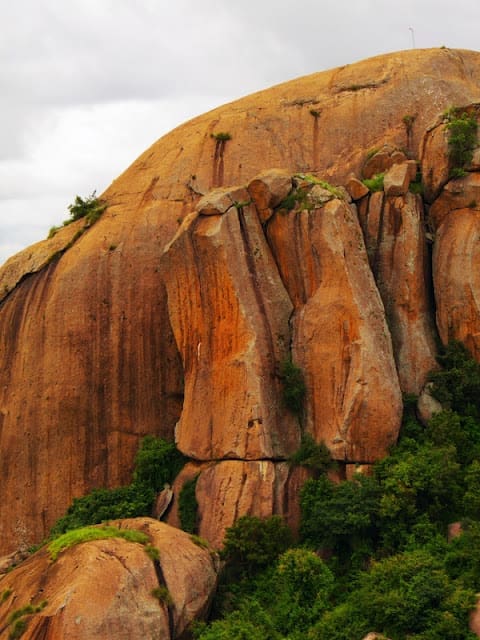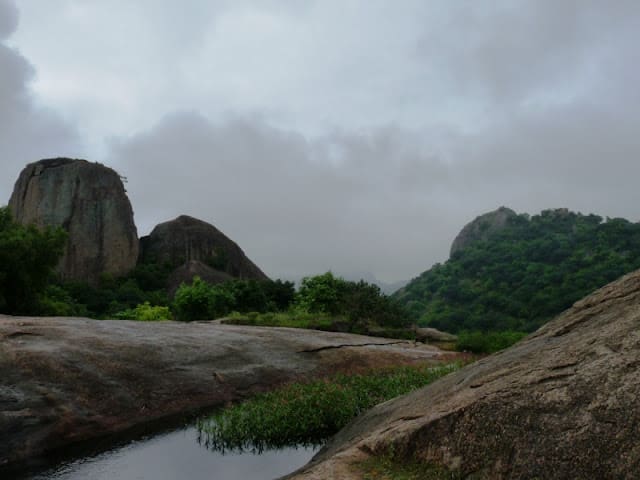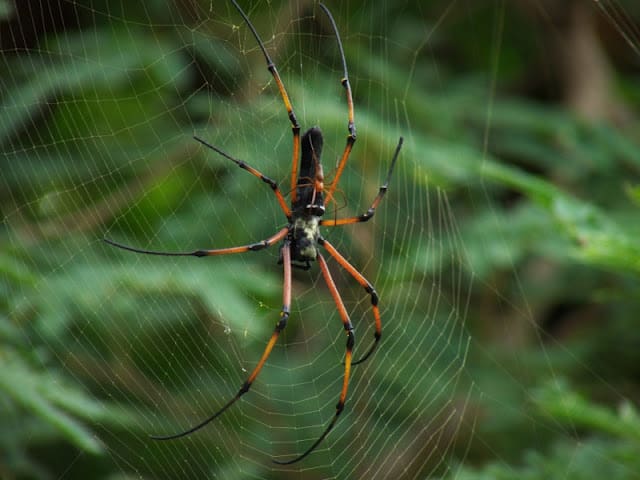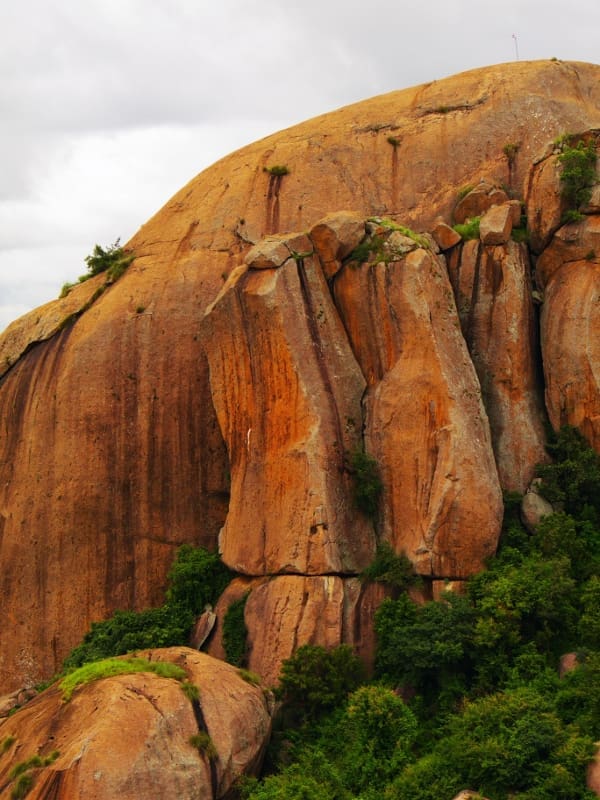The wind blew down from the hillock and hissed in my ear: “I am a rock”
 |
| A stray spell of sun lit up Ramanagaram’s famous rocks |
It wasn’t a winter’s day, as Paul Simon would have had it. But it had rained all night and the morning presented a stipple of sleepy raindrops on our windshield as Arun, Anitha and I arrived in Ramanagaram. It was meant to be just a walk among the rocky hillocks, a stretch of tired limbs away from the restraining roads and crammed pavements of the city. But for me it turned out to be a much-needed meditation.
On rocks. And Paul Simon and Arthur Garfunkel.
The Ramanagara rocks are believed to be some of the oldest granite massifs in the region. Captivating as they are, they have caught the eye of artists and filmmakers. Parts of David Lean’s A Passage to India were filmed here (as well as in Savanadurga, which is not far as the vultures fly). More famously, some of the most dramatic sequences in Ramesh Sippy’s epic Sholay were shot here.
 |
| A pool of rainwater had invited a chorusing party of frogs |
More recently some bright sparks, inspired perhaps by Mount Rushmore, wanted to carve faces into these hills. It took some irate resistance from concerned citizens to get them to drop the idea. I blanched to imagine the faces of our politicians (would Yeddy be among them?!) defiling the sanctity of this disturbed but still enchanting landscape. Insidiously, a private property has sprung up near Ramadevarabetta, the largest hillock that is crowned by a temple dedicated to Lord Rama.
As we climbed the steps leading up to the temple, we encountered nature’s crafty masque of potential domestic violence at its most gruesome, in which the roles (to my wife’s immense satisfaction) were reversed.
 |
| The tiny orange male can be seen on top of the female, whispering his famous last words of courtship |
At the centre of enormous invisible orbs, evil-looking female giant wood spiders lay in wait for wind-blown prey. Around them, their tiny beaus attempted to seek an opportune moment for an intimate interview, in which they had to move quickly to fertilise her or risk being inducted into her digestive system. Often, male spiders satisfy more than their mates’ lust. The ravenous female is known to devour the male even as she is mating with him. Burp, it would seem, is an equally dangerous four-letter word in arachnid vocabulary.
While the spiders wove their orbs, the cloudy sky began to weave music in my head. While the songs of Sholay were no doubt playing at the back of my companions’ minds, my mind’s ear drifted to Simon and Garfunkel.
Scoured by wind and water, the rock facades betrayed only slightly the grainy lament of untold endurance. As I gazed upon the cliff that had been portrayed as the villain Gabbar Singh’s den, I thought how aloof and forbidding these rocks looked, their bare, naked shanks thrusting skyward out of woolly socks of vegetation at their feet. And yet, they were witness to hopeful love. Vultures of three species nested in their crannies and ledges. Swifts tittered as they circled the outcrops. A pair of Shaheen Falcons courted at the rock’s bald summit.
At the peak of their popularity, Paul Simon and Arthur Garfunkel issued the song “I am a rock”, which was originally from Paul Simon’s Songbook, released in 1965. It is a rare track, not easily found except in thoughtfully arranged compilations. After the duo fell out, their personalities and tender sentiments lived on in their music.
Poets and songwriters (Simon was both) are often known to treat their own work with scorn, and such was the fate that “I am a rock” suffered when Simon publicly disdained the song. In an interview he said: “It is discomforting, almost painful, to look back over something someone else created and realize that someone else was you.”
The last verse goes thus:
I have my books
And my poetry to protect me;
I am shielded in my armor,
Hiding in my room, safe within my womb.
I touch no one and no one touches me.
I am a rock,
I am an island.
And a rock feels no pain;
And an island never cries.
In our everyday battle to win nature back from those who thoughtlessly defile her, these rocks, which have resisted molestation for millennia, shall certainly guide our way. We need to brace ourselves for the future with equal parts tenderness and imperviousness.
And if the song has already started playing in your head, listen on…
Text and photographs by Beej
- TL;DR – Death Stalks Like A Marabou Stork - July 24, 2024
- Dimorphic Egret – Meet this East African mystery bird - June 8, 2024
- Encounter: Northern Treeshrew in Arunachal Pradesh - May 19, 2024

